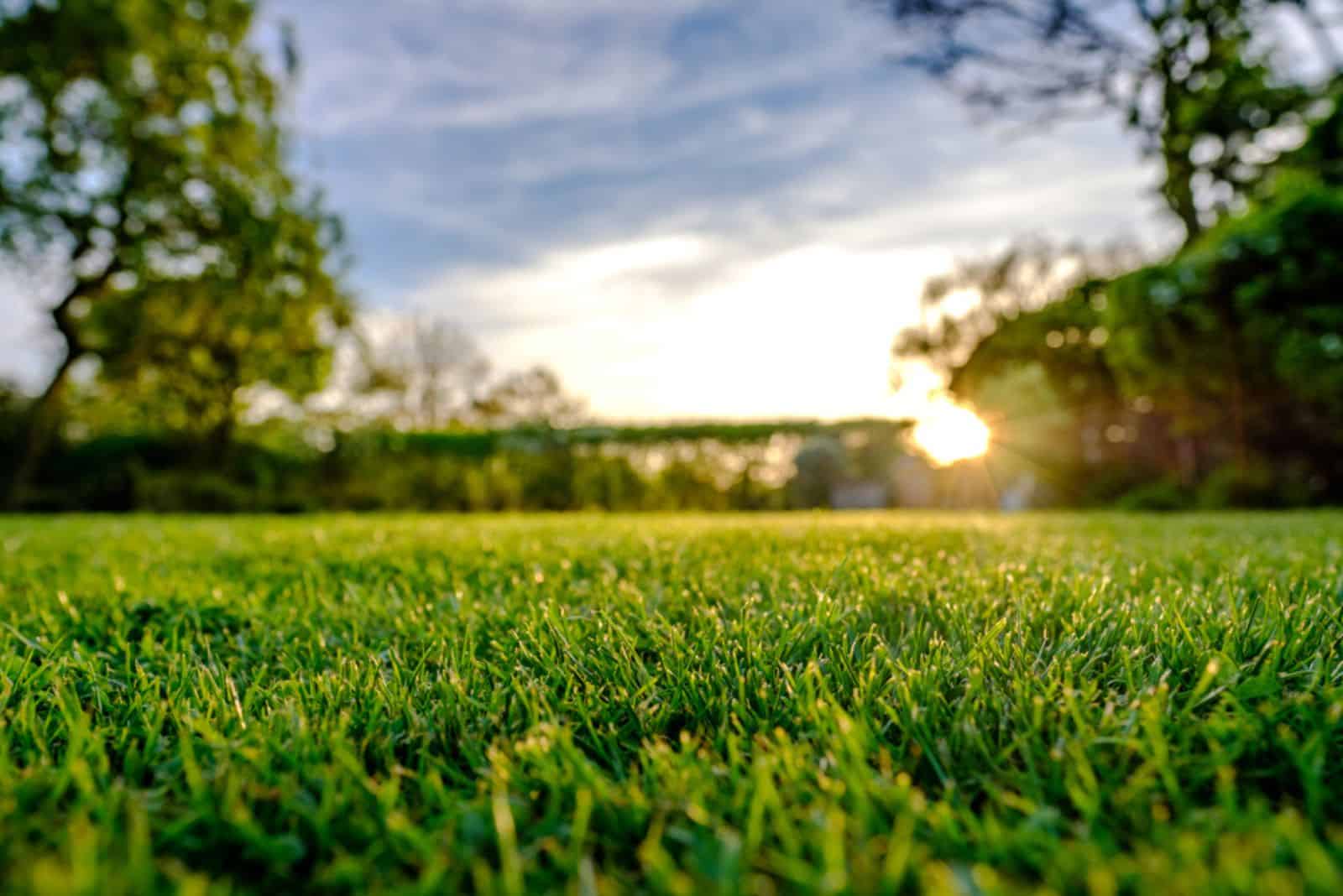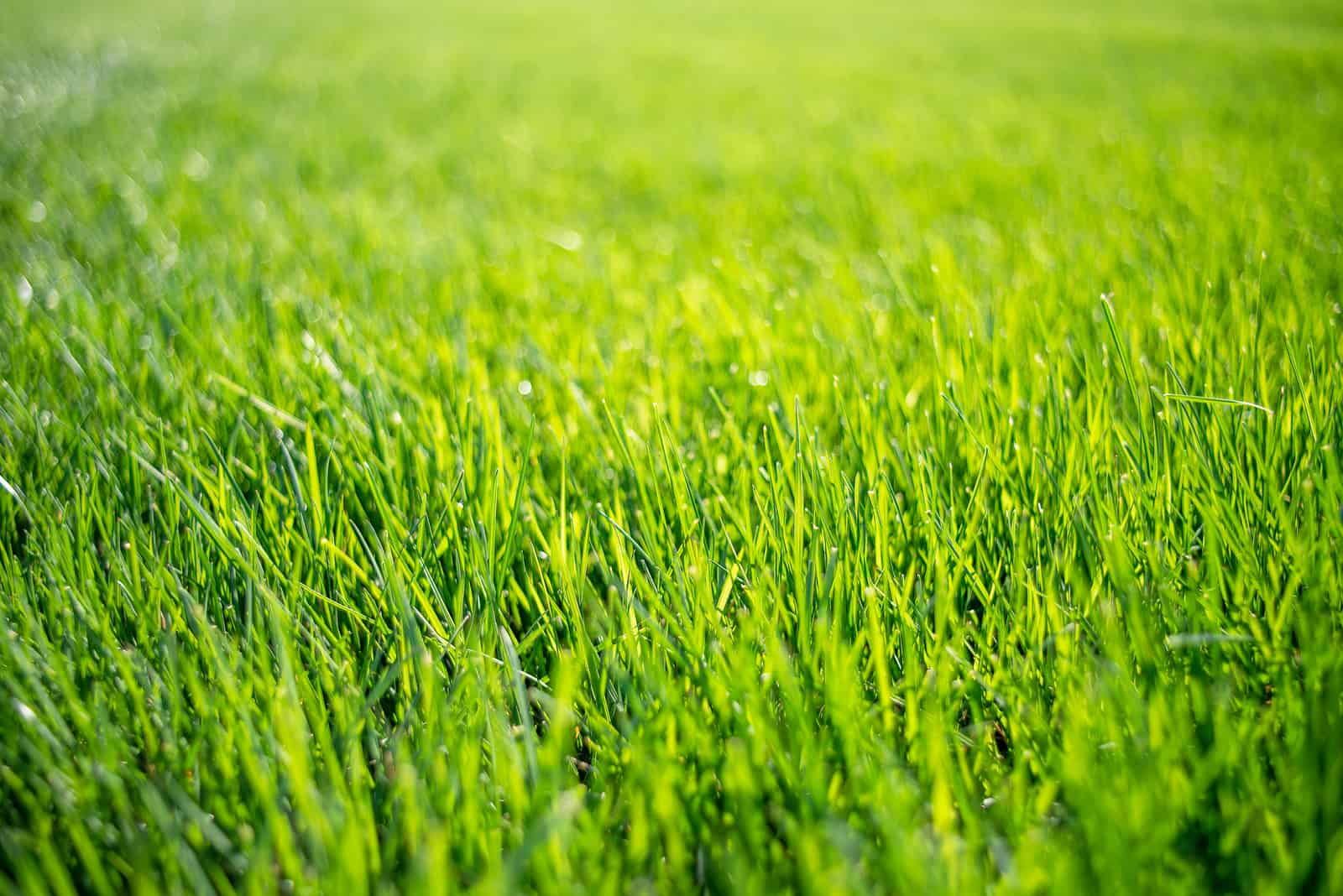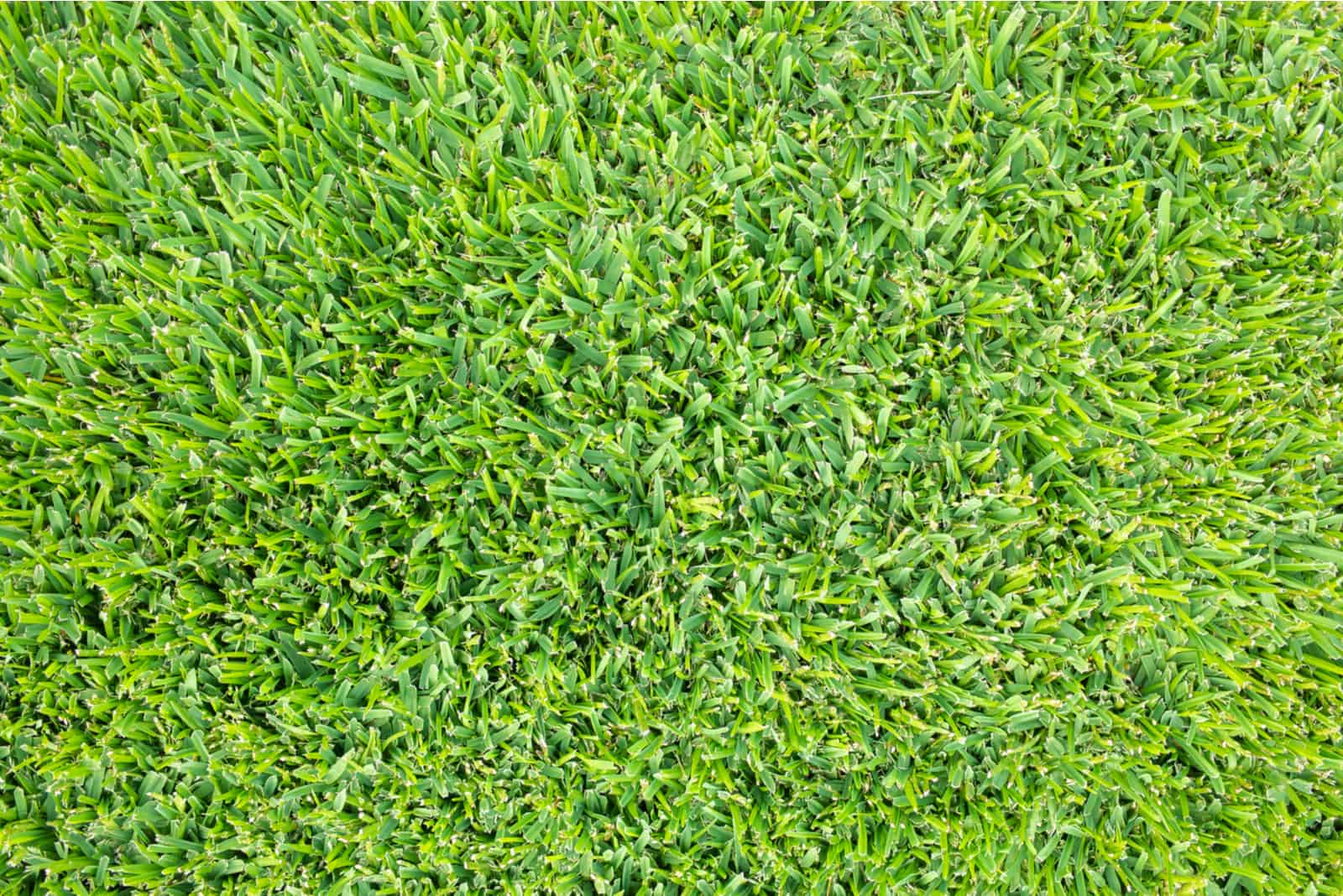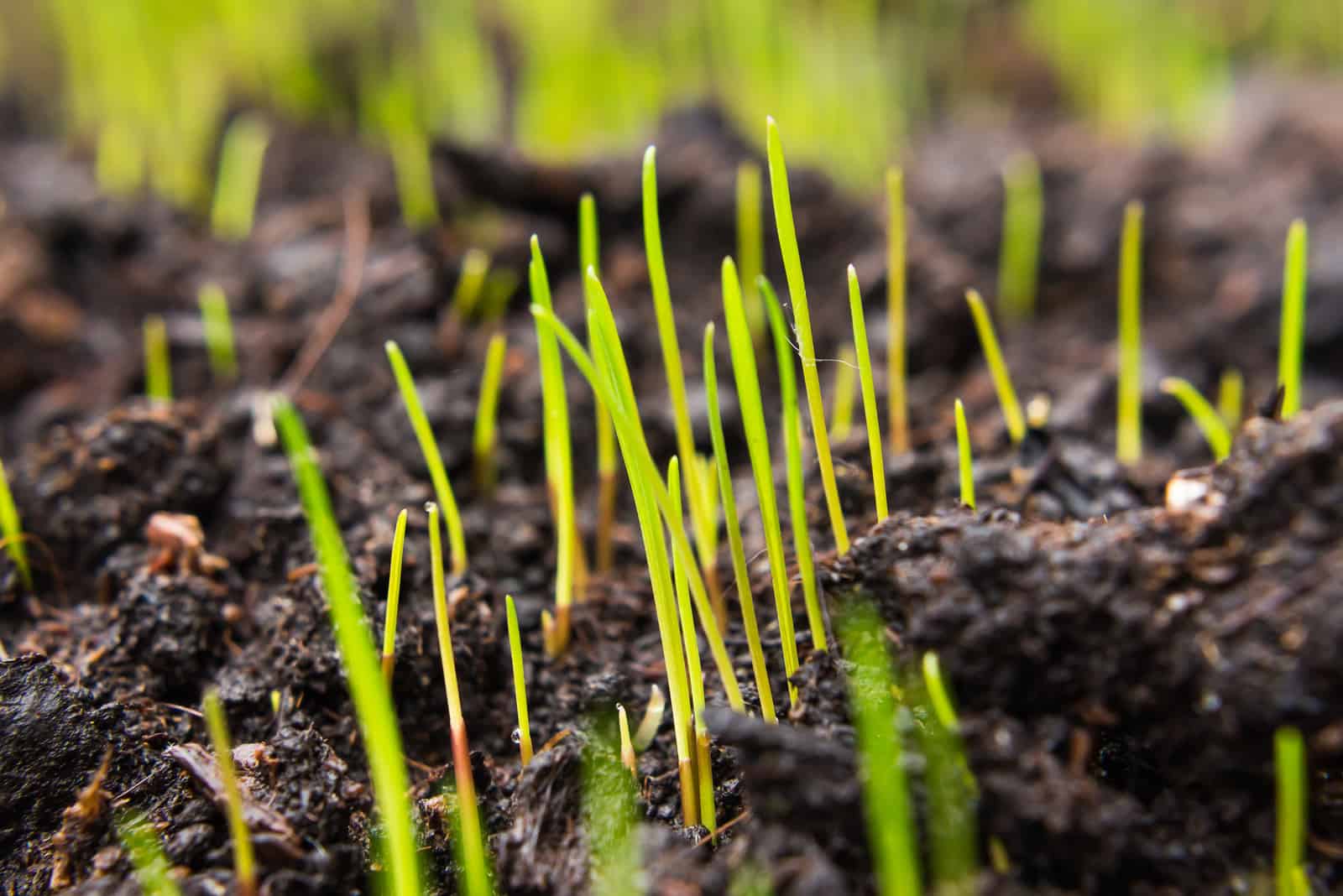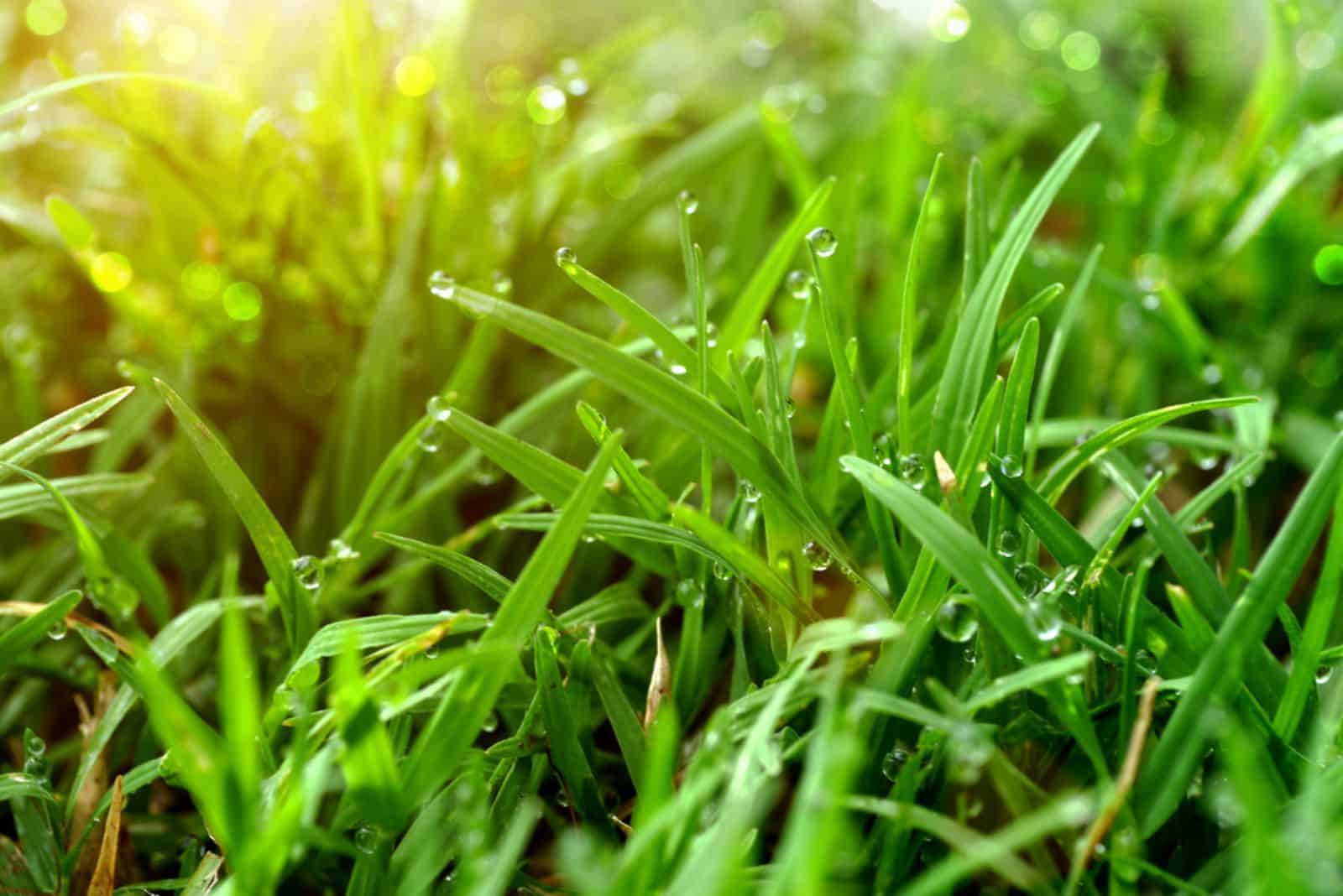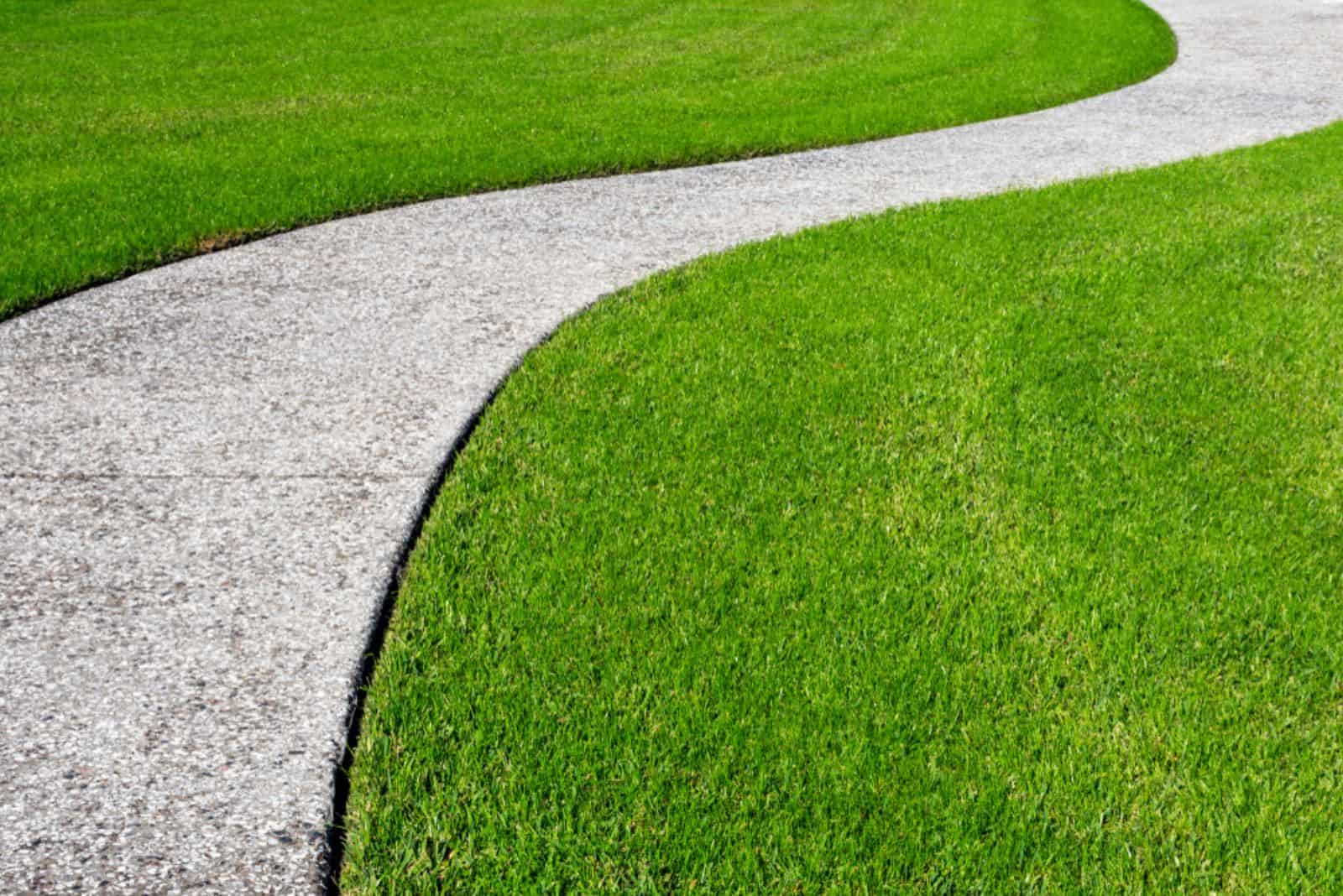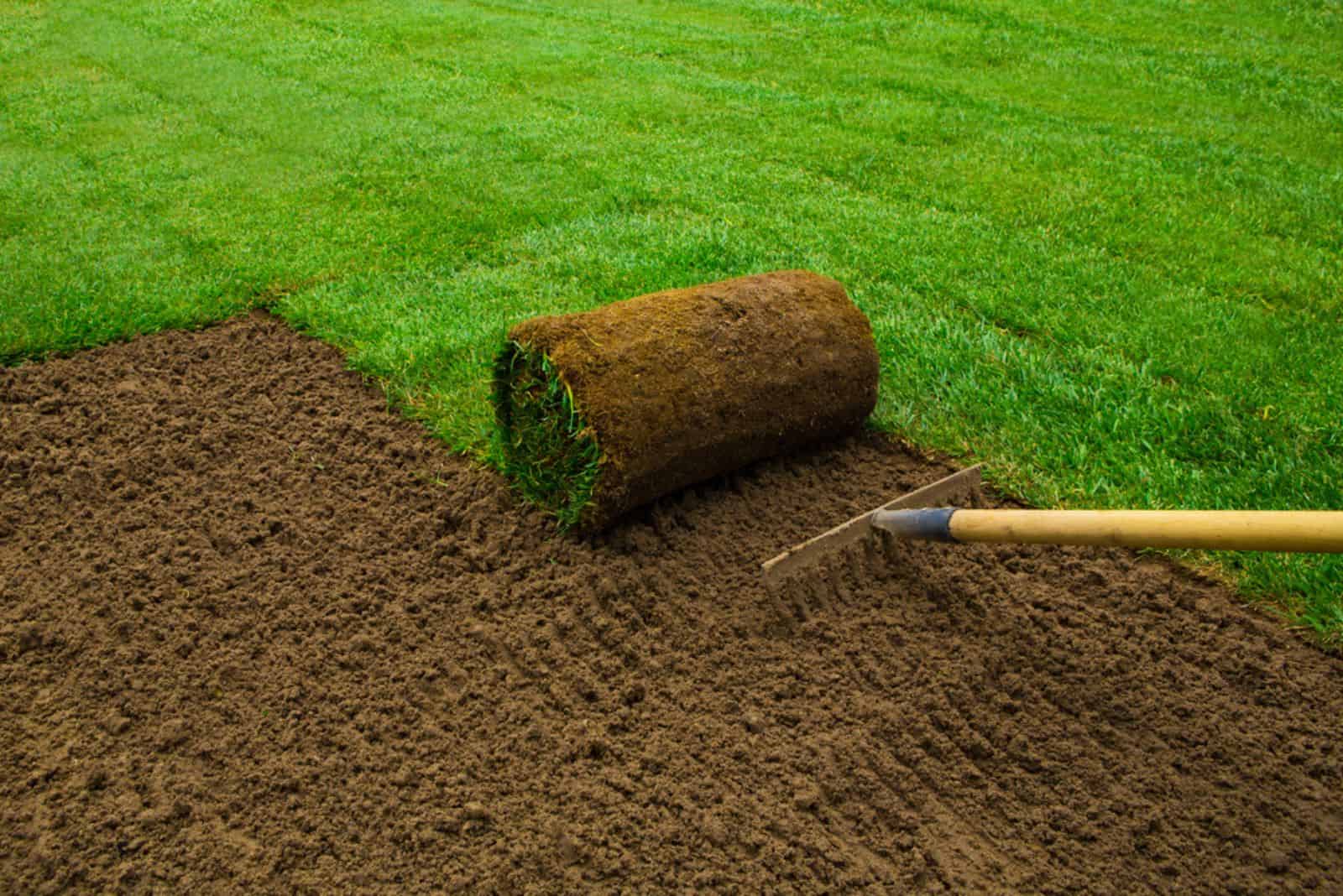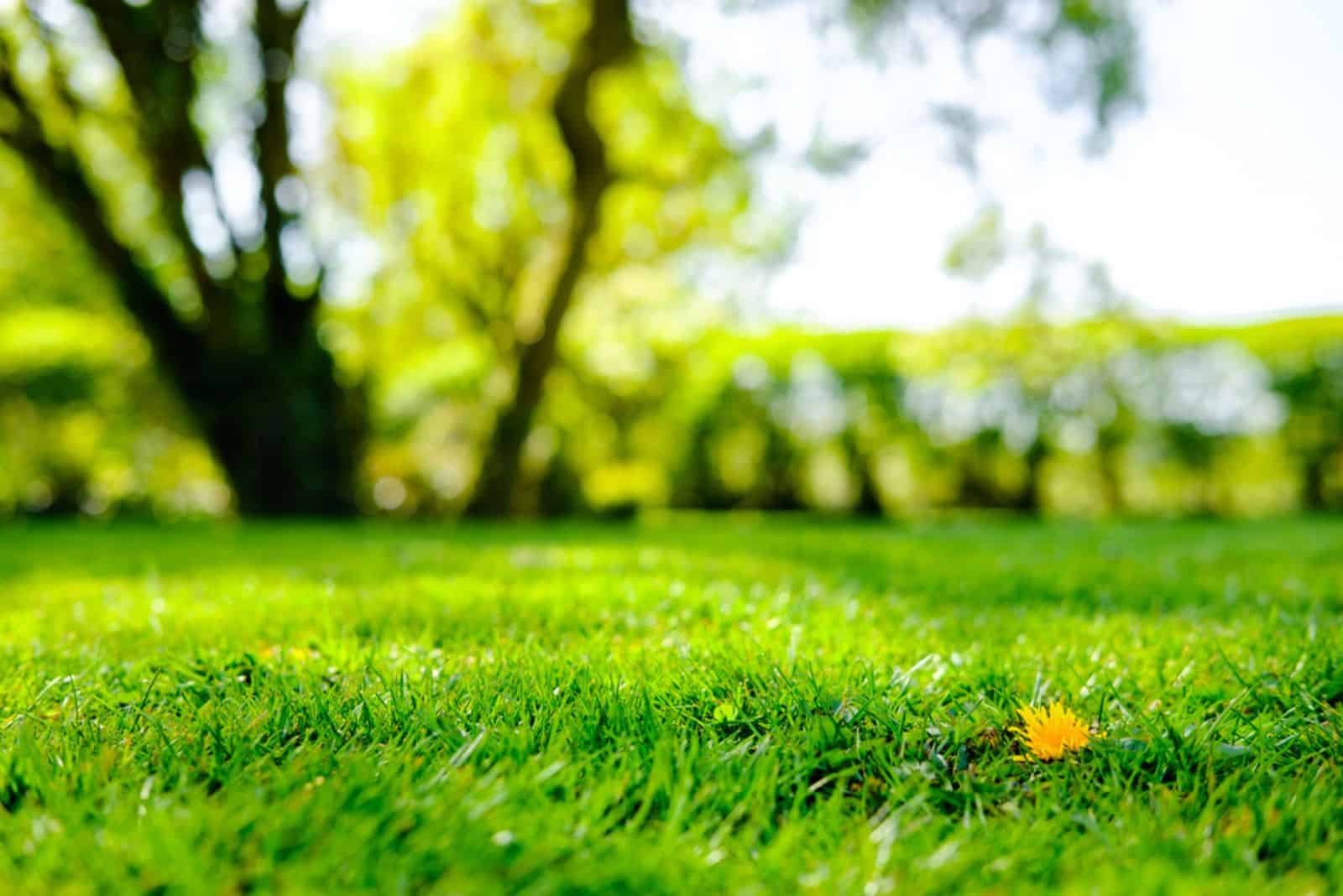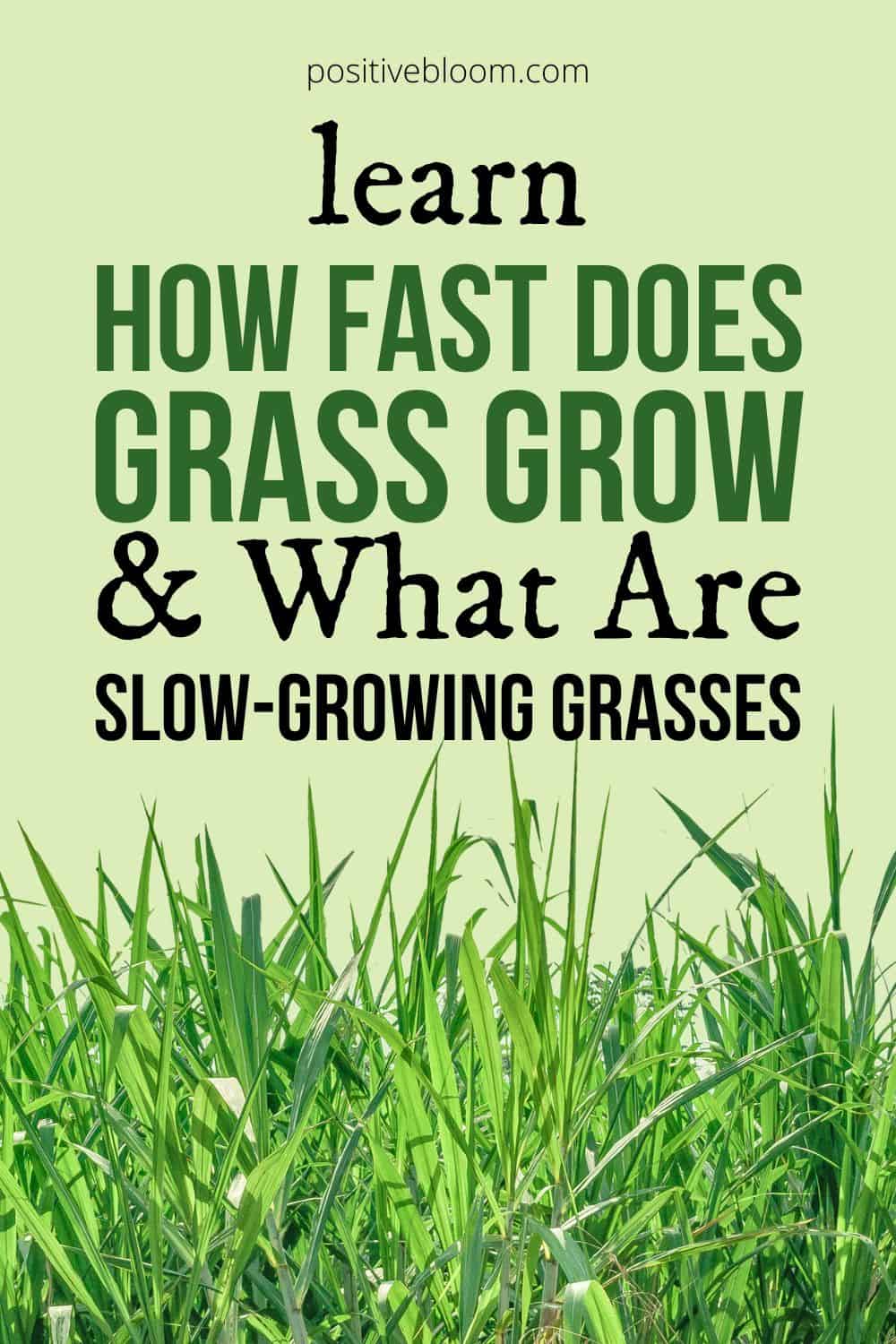Does it sometimes seem like you have to mow the grass every weekend, especially during summer?
It can get pretty tiring, so you might be wondering, how fast does grass grow? Does it depend on the type of grass, your watering habits, or some other factor?
Luckily, you have come to the right place because today we are going to talk all about fast-growing grass species, the types of grass that have slower growth so you don’t have to spend every Sunday mowing the lawn, and also how to properly take care of your lawn.
Read on to find out everything you need to know and more!
How Fast Does Grass Grow?
One gardener might have to mow their lawn every Sunday, while the other has to do it every other week. This is because many factors contribute to the growth rate of grass.
These include:
• Type of grass
• Seed germination time
• Growing conditions
• Weather
For instance, you might be planting cool-season grass seeds at the completely wrong time of year, and your grass might not grow at all in this case. You might have also nailed the planting time, and your grass is now growing like crazy!
Grass will grow differently in different conditions, and it is mostly affected by the weather and basic lawn care (such as watering and soil conditions). You might make some mistakes along your journey that will affect the growth rate, though these are easily avoidable and fixable.
Let’s look at these factors and help you find the right grass for your lawn!
Type Of Grass
Not all grass types grow the same way, especially in different climates. Lawn grasses are grouped into two classes: cool-season grasses and warm-season grasses. As their names suggest, these grasses will grow better in either cool or warm weather, and it all comes down to the type of grass in question.
Therefore, you should plant grass according to the climate in your region.
Cool-season Grass Types
Although they can tolerate much lower temperatures, cool-season grasses prefer temperatures between 60 and 85 degrees Fahrenheit. It’s best to grow these varieties in the fall, late summer, or early spring.
Cool-season grass types include:
• Fine Fescue
• Ryegrass
• Bluegrass
• Tall Fescue
• Bentgrass
• Creeping Red Fescue
Warm-season Grass Types
Although they can survive in cooler locations, warm-season grasses prefer temperatures over 75 degrees Fahrenheit to flourish. The grass will turn brown at any temperature below 55 degrees Fahrenheit. Late spring and early summer are the best times to grow these varieties.
Warm-season grass types include:
• Floratam St.Augustine
• Zoysia grass
• Bahiagrass Argentine
• Bermuda grass
• Centipede grass
Germination Process
You must pay attention to oxygen, moisture, soil temperature, and light for the germination process to succeed.
Be careful because the grass type affects the germination of grass seed. The approximate times required for germination can be found in the table below.
| Grass Type | Germination Time |
|---|---|
| Bermuda grass | Less than 7 days |
| Ryegrass | 5 -10 days |
| Fescues | 14 - 21 days |
| Kentucky Bluegrass | 21 - 28 days |
| Kentucky Bluegrass 21 - 28 days Bentgrass | 10 - 14 days |
Planting grass seeds at the right time and in proper soil will result in sprouting. You will have to provide lots of water to ensure that grass seed germination occurs.
Unfortunately, grass seeds not germinating is a common issue that can happen to any beginner gardener, and there are a few planting tricks that you can use to make sure that your grass seeds germinate and continue with their development!
Grass Seeds Not Germinating
1. Not enough light — for grass seedlings to sprout and flourish, they require at least 4 hours of direct sunlight. As a result, your seedlings may not begin to grow if you place them in a shaded area of your garden or bury them so deeply that they cannot receive any light.
2. Wrong temperature — because different grass species require varying soil temperatures for growth, soil temperature plays a significant role in a grass seed failing to germinate. Due to the warm and pleasant air temperatures, many homeowners believe that spring is the ideal season to grow grass seeds. But the soil needs to warm up first.
3. Soil problems — incorrect soil type, insufficient soil pH, too much compaction, and insufficient aeration are a few issues that could prevent your grass seed from sprouting.
Before planting, the soil should obviously be prepared to prevent hard and compacted soil. Rake your soil well and remove any debris and roots. If you want to save time and effort, you can always rent a machine designed for the task.
4. Water issues — the optimal conditions for growing grass seeds is moist soil that is neither too wet nor too dry. To create the ideal soil for your new seedlings, you must strike a balance. The best thing to do would be watering them for 10 minutes each day. If you have sprinklers, it will be even better because you won’t have to walk on the new grass seeds.
5. Wrong type of seed — as we already discussed, you should plant seeds according to your climate. Make sure that the grass seeds haven’t gone bad before planting because this can affect the germination process. Buy the grass variety that will grow best in the amount of light your garden receives (for instance, if your new lawn is in the shade, buy a grass type that loves growing in partial shade!).
6. Weed treatments — pre-emergent weed killers are frequently used by homeowners before planting. When used immediately after sowing grass seed, weed killers may also have the same impact on the grass because they prevent the weed seeds from germinating.
To ensure that nothing gets in the way of your new lawn, don’t use any weed-killer products on it sooner than 10 weeks before you plant new grass seeds.
7. Inadequate amount of seeds — when it comes to planting, overseeding happens most regularly because people believe that more seeds will make the grass grow faster. This is not the case, however. Additionally, seeds prefer having their own area to develop their root systems. The seeds will compete with one another for nutrition and available space if there are too many of them.
8. Fertilizers — your soil sometimes won’t have enough nutrients to assist fresh grass seeds in growth and germination. You should use a suitable lawn fertilizer to encourage seed germination as this will give your seedlings all the nutrients they require to develop into a lush, green lawn.
9. Mowing too early — it’s best to avoid cutting the grass too soon because the mower may rip young seedlings out of the ground, especially if the grass is damp.
Young grass cannot endure vehicle traffic as they are extremely heavy.
10. Foot traffic — even if used for driveways, grass seeds cannot tolerate being trodden on! This kind of pressure from foot and vehicle traffic can prevent grass seed germination, which results in poor grass growth. Before using your lawn as a walking surface, mow it at least three times. You can make sure your new grass is sturdy enough to withstand foot and car activity in this way.
Growing Conditions
We have already discussed that planting the right grass type at the right time of year is what it takes to ensure that the germination process will be successful.
However, there are a few tips and tricks that you can use to make sure you have the best grass, including:
• If you’re going to install a new grass variety on an existing lawn, be sure to measure the area and follow the directions on the packaging. If you’re installing a new lawn, be sure to measure the area carefully. For the best possible development, scatter the seeds uniformly with a spreader.
• Keep the first two inches of the soil moist for best results.
• Prepare the soil before planting and fertilize it to provide enough nutrients for the grass seeds. Use fertilizers that contain potassium and phosphorus.
• Avoid burying the seeds too deeply in the ground as this may prevent them from receiving enough light and air to support germination and growth.
• To keep the seeds in place and reduce evaporation, you can mulch the newly sown area.
• Herbicides and weed killers shouldn’t be used before planting or after you’ve already planted seeds because they can slow germination.
• Purchase sprinklers. Even though you have to pay some money, the grass will enjoy it and you will undoubtedly save time and effort.
• Avoid walking or driving on your brand-new lawn, and don’t mow it too soon either! This will utterly ruin your yard and tear out the young grass.
• Before the first mowing, wait until the grass has grown one-third higher than the desired mowing height.
Weather Conditions
Common grass types will grow about 1/10th of an inch during the day — however, this growth rate changes during the summer and winter seasons.
Daytime temperature heavily affects the growth rate of grass species during the summer. Most grass types can grow about 1/5 of an inch during the day if they are properly hydrated and well fed. If dehydrated, the grass may become dormant or lower its growth rate.
Temperatures higher than 90 degrees Fahrenheit are not suitable for cool-season grasses, and even warm-season grasses will have trouble growing if they are not watered a few times a day.
On the other hand, cool-season grasses thrive in lower temperatures and will grow at a much faster pace during early fall. Freezing temperatures would definitely kill warm-season grass types, while most cool-season grasses just lay dormant.
For instance, Zoysia grass (which is a warm-season grass type) would be dead at 30 degrees Fahrenheit. At 60 degrees Fahrenheit, it would grow about 2 to 3 inches per month, and at 75 degrees Fahrenheit it would grow 3 to 5 inches per month.
However, cool-season Tall Fescue would be dormant at 30 degrees, and it would grow 2 to 4 inches per month at 60 degrees Fahrenheit. It would barely grow at 75 degrees Fahrenheit, and any temperatures above would be deadly for this grass type.
A similar thing happens with Perennial Ryegrass, which is dormant at 60 degrees, grows 2 inches per month at 60 degrees, and is able to grow 3 to 5 inches at 75 degrees Fahrenheit. However, temperatures of 90 degrees can damage this grass type.
The Best Grass Types For Your Lawn
Let’s look at some of these grass types in more detail so you can find the right one for your lawn!
If you are into landscaping and growing tall grass types, make sure to check out the tallest grass types in the World!
1. Buffalo Grass
Buffalo grass thrives in hot climates, which makes it an ideal grass type to grow in Florida.
Its color is blue-green, and it can withstand varying soil pH levels. Buffalo grass might not be the best grass for your yard if it’s partially shaded as it hardly tolerates any shade.
Despite having delicate, curling leaf blades, another disadvantage is that it isn’t appropriate for locations with high foot traffic.
If you use this grass seed, you should avoid overwatering and maintain a 1.5 to 3-inch mowing height.
2. St. Augustine Grass
St. Augustine is one of the most popular grass types used for lawns and landscaping. The only negative to planting this variety of grass is that you will likely need to mow it more frequently due to how quickly it grows. Otherwise, you will adore it!
Common grass varieties include Floratam and Palmetto, which are descended from the St. Augustine grass lineage.
Palmetto St. Augustine Grass
The most important fact about Palmetto St. Augustine grass is that it is the most popular variety sold worldwide.
The capacity of this grass to grow in a variety of soil types and climates is what makes it extremely popular.
Your new lawn will look fantastic thanks to its blue-green hue, exquisite texture, and dense turf of this grass.
Because of its extensive root system, it is more tolerant of cold, frost, drought, and heat. Additionally, this particular grass variety has the highest shade tolerance.
Floratam St. Augustine Grass
Because of its coarse texture and soft leaf blades, this variety of St. Augustine grass is suitable for barefoot walking. Kids will like using it for playtime!
Your backyard will look absolutely wonderful thanks to the light green grass.
Floratam St. Augustine grass prefers slightly acidic soil to other varieties because it makes it easier for the roots to absorb nutrients and water.
You will have to mow the lawn more regularly to keep it at the appropriate mowing height of 3 inches. This is because this warm-season grass grows much more during the summer than during cooler seasons.
Compared to Palmetto, Floratam is more vulnerable to insects and pests. Insects really adore it!
It used to be resistant to chinch bugs, but these pesky insects have evolved and can now infest practically any kind of grass.
3. Zoysia Grass
The best option for if you’re looking for stunning, dark to medium green, drought tolerant, and minimal maintenance grass is zoysia grass!
It likes both full sun and shade, so it doesn’t matter if your lawn has shaded areas because the Zoysia grass will grow everywhere!
For high-traffic locations like sports fields or golf courses, zoysia grass is considered as one of the best varieties.
Because Zoysia grass is a turfgrass that inhibits weed development, requires little water and fertilizer, and is resistant to common pests like fleas and ticks, homeowners frequently choose this type of grass when they don’t want to spend a lot of time maintaining their lawn.
This type of grass is not frost-tolerant, but it will start growing again once the temperature reaches 70 degrees Fahrenheit.
4. Bermuda Grass
Bermuda grass is the best option if you’re looking for grass that can withstand drought.
This grass is frequently used on athletic fields because it can withstand heavy use and direct sunlight while maintaining an attractive appearance.
This grass is distinctive due to its green-gray color, and it is frequently used to spruce up gardens.
It can also quickly develop in various soil types and generate seeds. In certain regions like Florida, this grass type can become invasive, which is why it is not as popular there.
If you decide to grow this grass type, make sure to check the best weed killers for Bermuda grass.
5. Bahia Grass
This delicate grass can endure mild temperatures as well as scorching, arid environments.
Although Bahia grass doesn’t grow during droughts, its deep roots in sandy soil help it to withstand them.
When it comes to lawn maintenance, Bahia grass can be somewhat demanding. It needs regular mowing even though it only needs a little irrigation and fertilizer.
This grass type is also susceptible to weeds, so make sure that you apply weed killers to keep your lawn nice and tidy!
6. Carpet Grass
Gardeners frequently use this warm-season grass for gloomy and damp lawn regions as it can tolerate some shade.
This low-maintenance grass doesn’t require much fertilization, but it does require more regular mowing.
Because it can resist heavy traffic, carpet grass is frequently utilized as a cover for parks, airports, and highways. However, rapid seedhead generation is a significant disadvantage.
7. Centipede Grass
Among the cool-season grasses is centipede grass. It prefers cooler climates and doesn’t fare well in the sun at all.
This grass species grows slowly and needs fewer fertilizers, making it ideal for low-maintenance lawns.
However, this light-green grass prefers acidic soil and is also prone to thatch development.
If you notice a sign warning people not to walk on the grass, it’s likely centipede grass because it cannot tolerate being trodden upon.
Frequently Asked Questions
1. How fast does grass grow each day?
The growth rate is influenced by the type of grass and environmental factors such as pH, soil type, water quality, season, air quality, temperature, day length, and light.
Trying to determine how much grass grows during the day is a challenge. There must be at least 4 hours of sunlight each day for the grass to grow vigorously.
Grass typically grows between 0.20 and 0.60 inches per day, or 2 to 6 inches per month.
When the temperature is lower, particularly in the early spring and fall, cool-season grasses will grow more quickly. Warm-season grasses, on the other hand, experience growth spurts in the summer as well as in the late spring and early fall.
2. Can grass grow overnight?
The answer is yes, grass can grow overnight. For photosynthesis to occur during the day and to produce oxygen and glucose from carbon dioxide, grass needs sunshine. The nutrients they take up from the grass blades also help the grass to grow overnight.
In fact, grass grows at its fastest rate just before dawn because it has metabolized all of the nutrients to create the energy-giving sugar glucose.
Both the ecosystem and humans depend on grass because it gives us the oxygen and glucose we need to survive.
3. What is the fastest-growing type of grass?
It actually depends on the soil and climate in your area!
There are two categories of grasses: those that enjoy the cold, and those that enjoy warmer weather.
Bermuda grass is the variety of warm-season grass that germinates the quickest, taking fewer than 7 days to do so.
If you opt to cultivate Bermuda grass, be ready to cut it often because it is a resilient variety that prefers full sunlight.
St. Augustine, Zoysia, and Centipede are three more rapid warm-season types of grass.
The Perennial Ryegrass, often known as Ryegrass, is the cool-season grass with the quickest rate of growth. These grasses will germinate in about 5 to 10 days, and they are pretty easy to maintain. Kentucky Bluegrass is also a cool-season and fast-growing grass type.
To Sum Up
It can be hard to determine how fast does grass grow, especially because it cannot be seen by the naked eye!
However, gardeners have worked very hard to figure out which types of grasses are fast-growing ones and which take their sweet time for growth and development.
If you don’t want to spend much time mowing your lawn constantly, then I would suggest you buy a slow-growing type of grass. Therefore, steer clear of Kentucky Bluegrass (even though it is the prettiest one!), Ryegrass, Zoysia, St. Augustine, and Centipede grasses.
I hope this article was helpful.
Until next time!
Like this post? Share or pin it for later!

